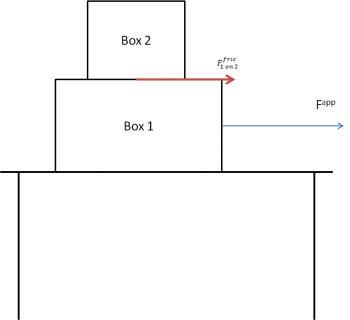-
The biggest misconception about friction is that it opposes the motion of an object. This is not always true; friction arrises from the contact between two surfaces. Friction opposes the relative motion of these two surfaces. This can be a subtle, and confusing, distinction. What relative motion describes is how two objects are moving compared to each other, not the motion from an outside observer. A good example of this is a box on the back of a pickup truck when the truck, starting from rest, puts the pedal to the metal and the box slides off the truck. If I’m watching the truck drive away I see the truck drive to right while the box in the back slips off, staying where it was. However, I’m an outside observer. For the relative motion of the box and the truck I need to ask how the truck driver sees the box move. If I’m the truck drive I don’t see the truck and I moving right, I see the box sliding to the left. That is the relative motion of the box and the truck.
-
Along this same lines many people think that friction is never in the same direction as the velocity. Consider the situation below and assume box 2 does not slip relative to box 1 and that the applied force causes them to both move to the right. The only horizontal force on box 2 is friction, therefore the friction must be in the same direction as the motion of box 2.
-
There are also two type of friction, static and kinetic friction. Sometimes people will include both of these forces from a single object. These two forces are never applied at the same time by the same object. If the system has two objects touching it, such as box 1 above, it can have static friction with box 1 and kinetic friction with the table. However, there will never be static and kinetic friction from box 1.
-
Static friction Fs=Fs_max=uN when an object begins to first move or slip. The common misconception is that Fs is always equal to uN. This is only the case for Fs-max.
-
Friction can't act in the same direction as motion
